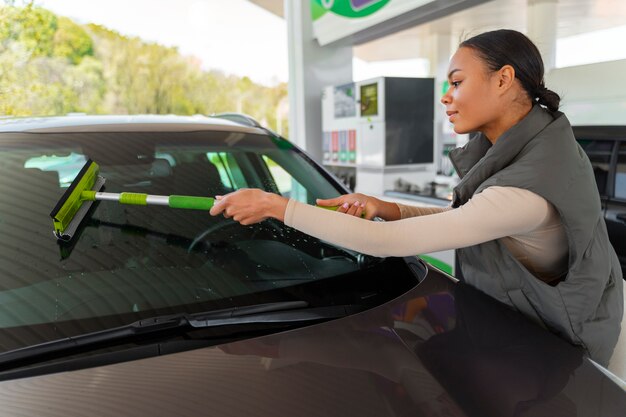
A self-driving car from Cruise, which is backed by General Motors, ended up stuck in wet concrete on Tuesday. This happened in San Francisco, just a few days after California’s Public Utilities Commission allowed Cruise and Waymo to expand their paid ridesharing services to operate all day, rather than just during off-peak hours.
Despite this decision being celebrated as a major step forward for the industry, the recent incident highlights that there are still problems with the technology when it comes to safely navigating public roads. A local resident, Paul Harvey, saw the stranded Cruise car and took a picture that he then shared with the San Francisco Gate. He pointed out that the car, lacking a human brain, couldn’t recognize that the concrete was freshly poured.
Before the concrete could dry, workers from Cruise arrived to retrieve the car and move it back onto the road. Digital Trends has reached out to Cruise for more details on how the car ended up in the concrete and will update their story once they hear back.
In another recent issue, social media posts have shown that some autonomous cars in San Francisco were causing traffic jams. Footage captured at least 10 Cruise vehicles with their hazard lights on, stuck in the North Beach area near where the Outside Lands music festival was being held. Cruise explained that the festival caused wireless bandwidth issues, leading to connectivity delays with their vehicles. They are investigating and working on solutions to prevent such problems in the future, and they also apologized for the inconvenience.
Waymo’s self-driving cars have also faced challenges. In April, their sensors and cameras struggled with dense fog, causing some vehicles to stop, including one that halted in the middle of a street, confusing nearby drivers and creating a traffic jam. In response, Waymo has been working on a fifth-generation imaging radar that uses microwaves instead of light to see through fog and mist. They have also designed a new cleaning system to keep their sensors clear.
Aaron Peskin, president of San Francisco’s Board of Supervisors, commented that the companies should pause their operations until the technology is perfected, given that hundreds of these cars are on the streets.
Cruise called the recent decision by the Public Utilities Commission a “historic industry milestone” and pledged to continue working closely with regulators and first responders. Waymo echoed this sentiment, describing the permit as the true beginning of its commercial activities in San Francisco.
Clearly, there is some resistance in the city to the easing of regulations for autonomous cars. Both Cruise and Waymo will need to minimize these incidents to win over skeptics.